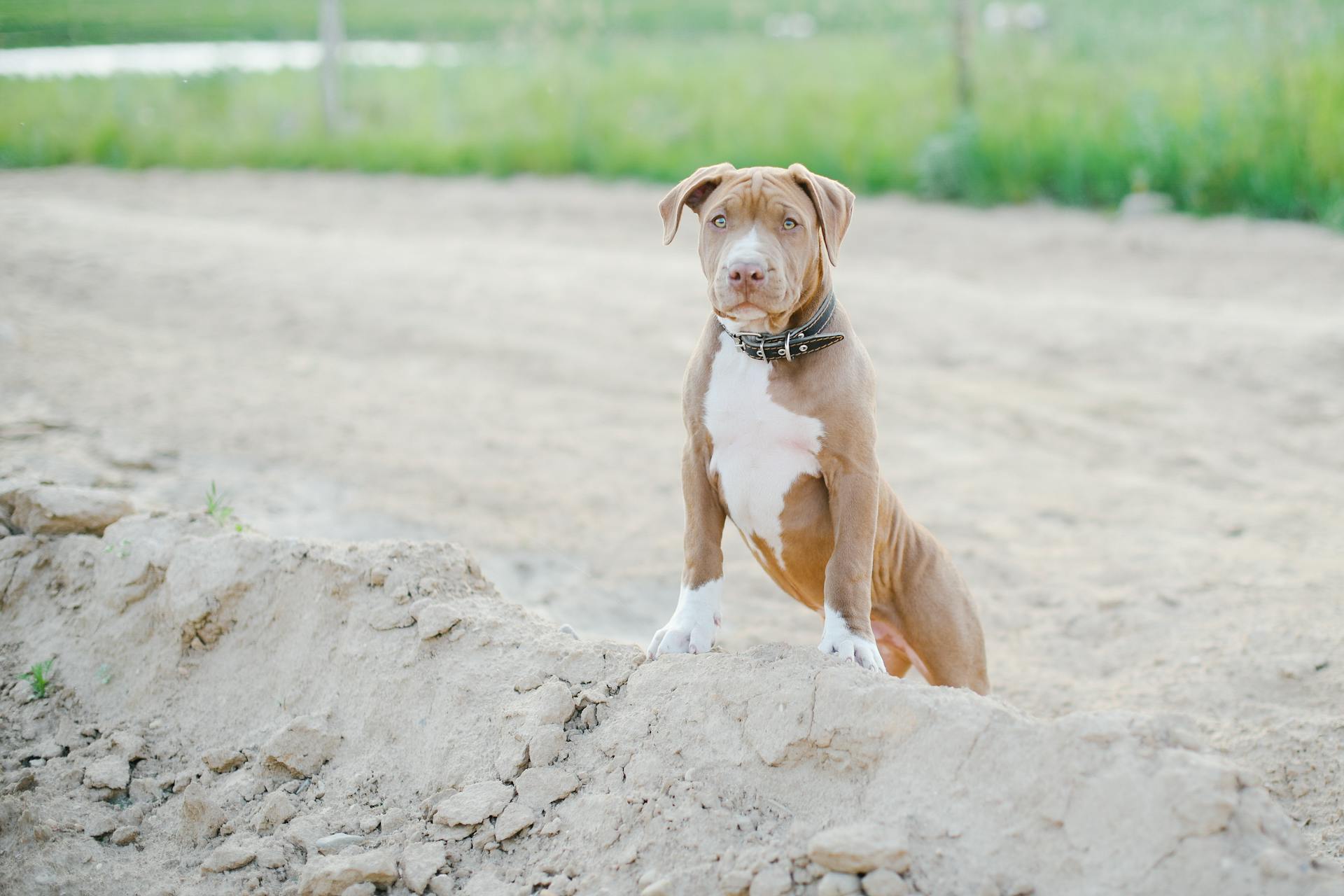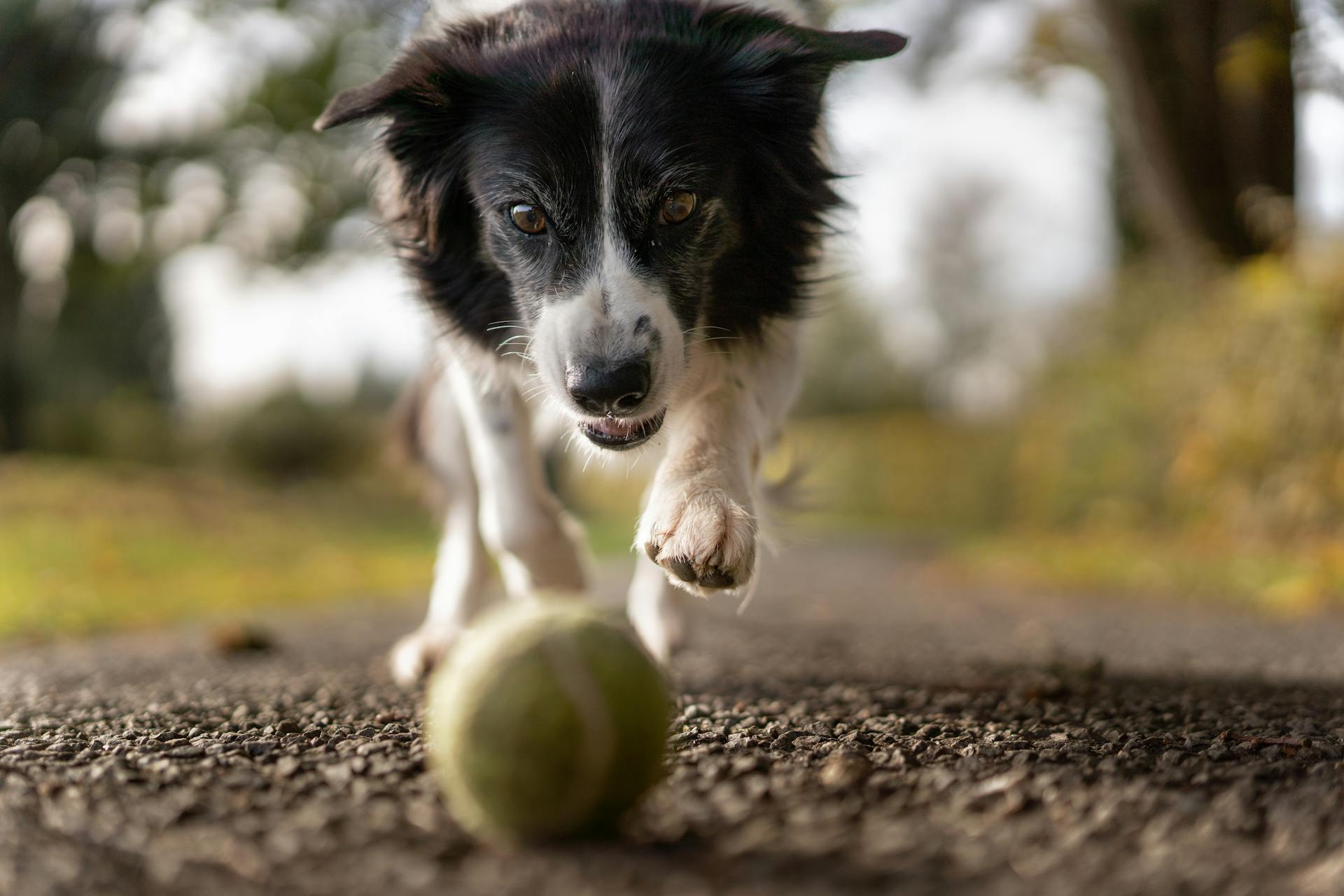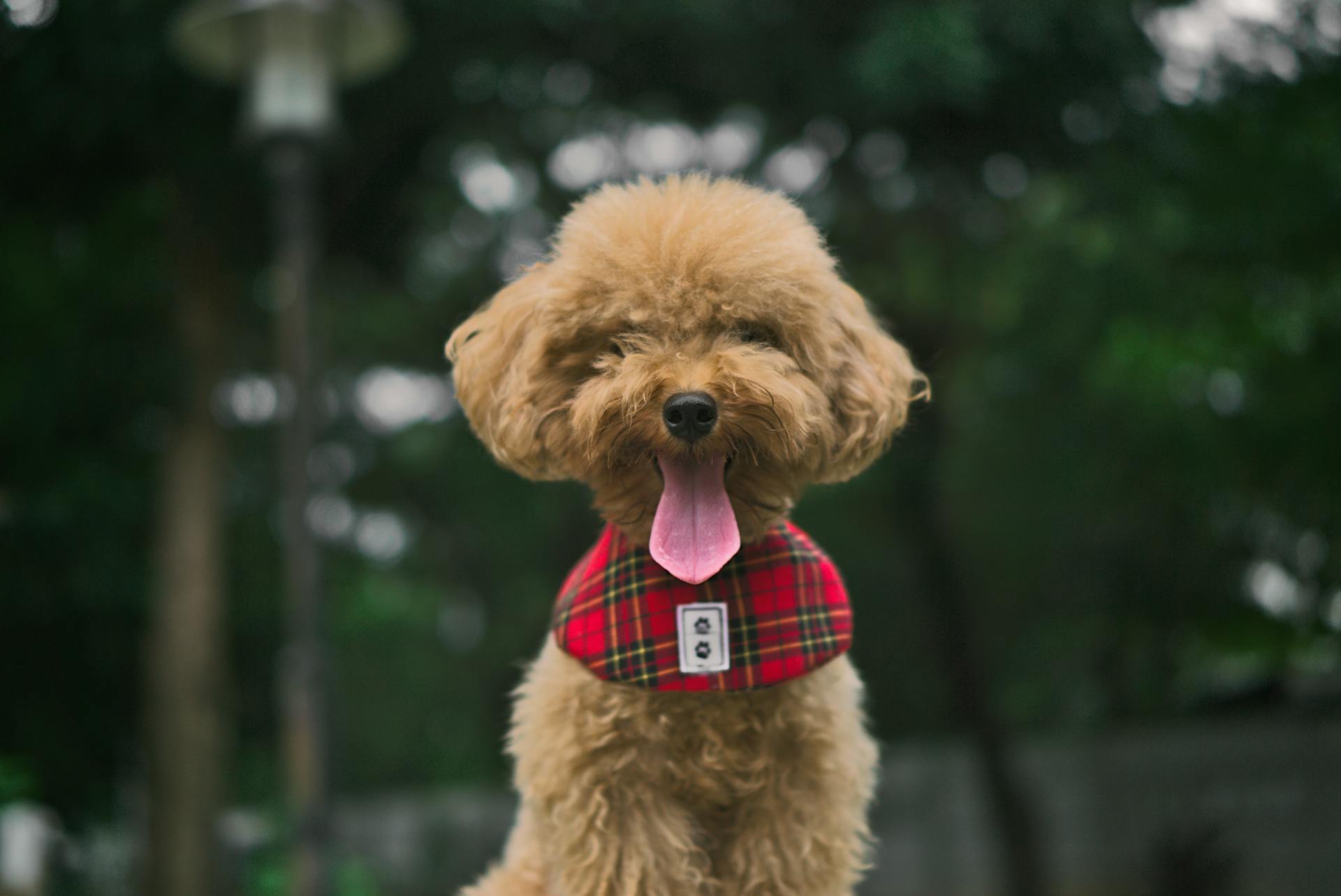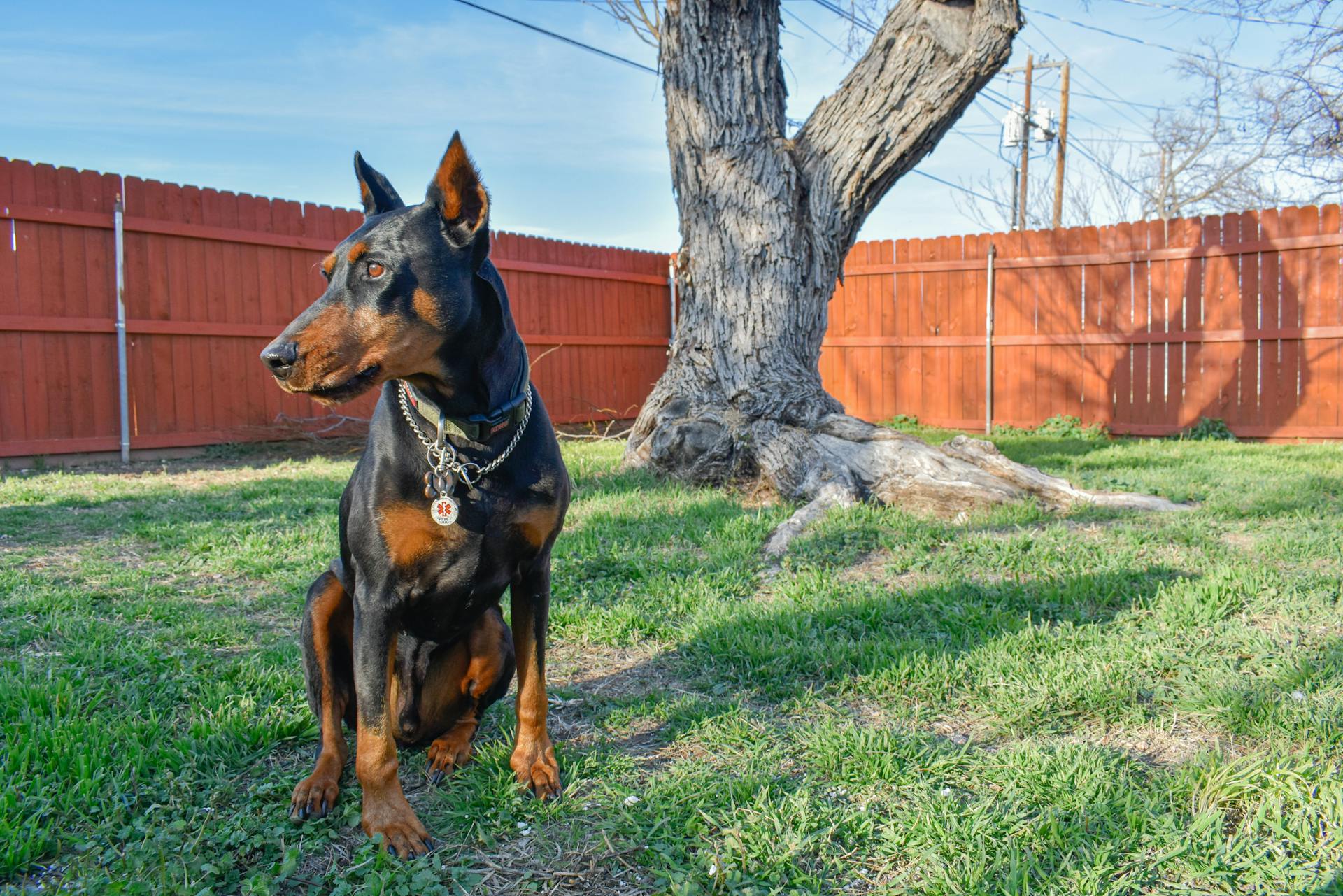
Pitbulls are bred to hunt and kill small animals, and as a result, they have a strong prey drive. This means they're naturally inclined to chase and catch anything that moves, from squirrels to cats.
Their ancestors, the Old English Bulldogs and the Old English Terriers, were used for bloodsports like bull-baiting and ratting, which involved hunting and killing small animals. This history has had a lasting impact on the breed's instincts.
Pitbulls are highly energetic and need regular exercise to burn off their excess energy. Without enough physical activity, they may resort to destructive behavior, like chasing small pets.
Their prey drive can be intense, but it can also be managed with proper training and socialization.
Check this out: Small Pitbull Dog
Understanding Prey Drive
Dogs with strong prey drive can't help but stare at potential prey, even from a distance. This can be frustrating for owners who want to enjoy a peaceful walk with their dog.
Signs of prey drive include fixation and staring at prey, stalking or tracking while approaching, and lunging or chasing after small animals. These behaviors are often accompanied by high excitement, such as an upright and tense posture, teeth chattering, and drooling.
A Pitbull with high prey drive can be a handful, but with proper training and socialization, you can reduce this behavior. Consistency is key when training your dog to "leave" small animals alone.
Using a reward-based system with positive reinforcement can be an effective way to train your dog. This means rewarding your dog for calm behavior around small animals, rather than scolding them for reacting impulsively.
To keep your dog safe and others safe from your dog, ensure your property is secured. This includes keeping your dog on a leash during walks and teaching them to come to you immediately when called.
Here are some key signs of prey drive in dogs:
- Fixation and staring at prey while at a distance
- Stalking or tracking while approaching or following other animals
- Lunging, chasing, grabbing, hovering above or over the shoulder of a small animal
- Signs of high excitement including upright and tense posture, teeth chattering and drooling, quickening of movement, and an upright stiff tail that is wagging quickly
Managing Prey Drive
If you have a Pitbull with high prey drive, you can socialize them and train them to reduce this behavior.
Properly raising a Pitbull with a high prey drive can reduce potential problems for them and other animals.
Here's an interesting read: How to Stop Prey Drive in Dogs
To train your dog to "leave" small animals alone, use a reward-based system with positive reinforcement.
Staying consistent in your training is key to reducing prey drive in your Pitbull.
You can use a reward-based system with positive reinforcement to teach your dog to leave small animals alone.
Keep your property secured to keep your dog safe and other animals from entering.
Teaching your dog to come to you immediately when called is essential in managing prey drive.
Here are some tips to help you manage your Pitbull's prey drive:
- Train your dog to “leave” instead of running off after small animals.
- Stay consistent in your training.
- Use a reward-based system with positive reinforcement.
- Ensure your property is secured to keep your dog safe and other animals from entering.
- Teach your dog to come to you when being called immediately.
- Keep your dog on a leash during walks.
Pitbulls and Prey Drive
Pitbulls have a strong prey drive, which means they're naturally drawn to chasing small animals. This is a result of their breeding history as fearless and aggressive hunters.
Signs of strong prey drive in Pitbulls include fixation and staring at prey from a distance, stalking or tracking while approaching, and lunging or chasing small animals. They may also exhibit high excitement, such as an upright and tense posture, teeth chattering, and drooling.
See what others are reading: Bark Shock Collar for Small Dogs
Pitbulls are excellent at hunting due to their strong prey drive, courage, and physical abilities. They can track down small game like raccoons, opossums, and rabbits, and even larger animals like bears.
To handle a Pitbull with high prey drive, it's essential to socialize and train them properly. This can reduce potential problems for both the dog and other animals.
Here are some tips on how to handle a Pitbull with high prey drive:
- Train your dog to "leave" instead of running off after small animals.
- Stay consistent in your training.
- Use a reward-based system with positive reinforcement.
- Ensure your property is secured to keep your dog safe and other animals from entering.
- Teach your dog to come to you when being called immediately.
- Keep your dog on a leash during walks.
Handling Dogs with High Prey Drive
Handling dogs with high prey drive requires attention to detail and consistency in training. Staying alert during walks and scanning the environment can help you spot potential prey before your dog does.
Making eye contact with your dog and holding that eye contact until you pass the animal can be an effective way to redirect their attention. Bringing along their favourite treats and toys can also help distract them until it's safe.
Recommended read: Does Neutering a Dog Help with Aggression
Properly training your dog and socializing them early on can ensure their safety. Consistency in training is key, so try to use the same commands and rewards every time.
Here are some specific tips to help you handle a Pitbull with high prey drive:
- Train your dog to “leave” instead of running off after small animals.
- Use a reward-based system with positive reinforcement.
- Teach your dog to come to you when being called immediately.
- Keep your dog on a leash during walks.
Securing your property to keep your dog safe and other animals from entering is also crucial. By following these tips and staying consistent, you can help reduce your dog's prey drive and prevent potential problems.
Frequently Asked Questions
What dog has the highest prey drive?
The Podenco has the highest prey drive among the breeds listed, according to my research. This breed's strong instinct to chase and catch prey makes it a great match for active owners who enjoy hunting and outdoor activities.
Sources
- https://www.luchiandmuttons.com/post/prey-drives-predatory-behaviour-pit-bulls
- https://www.leaveit.com.au/dog-lifestyle/what-is-dog-prey-drive-4-signs-of-prey-drive-how-to-control-it/
- https://bestdoglearningandstuff.co.uk/prey-drive-in-pit-bulls
- https://www.dogster.com/lifestyle/is-pitbull-a-hunting-dog
- https://www.k9possible.com/single-post/2019/12/11/dont-get-a-pit-bull
Featured Images: pexels.com


